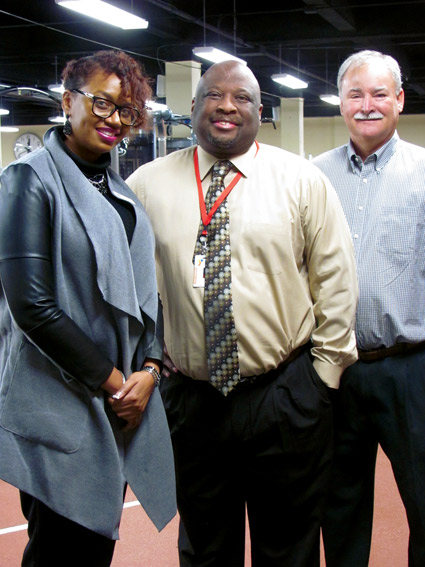
By Debbie Gardner
debbieg@thereminder.com
William “Chet” Galaska has been passionate about many things in his 66 years. In 1979 the college grad co-found a stainless steel casting company that grew into a multi-million dollar enterprise. Twenty-four years later, he sold that business and became a real estate investor. Along the way he’s also been a private pilot, rugby player, certified scuba diver, skydiver and roller coaster aficionado.
At age 30, he hit a serious health bump, developing troubling symptoms on a company sales call. Reading about diabetes in a pamphlet at a local Blue Cross Blue Shield office, Galaska consulted a doctor and was diagnosed with Type 1. It came as no surprise; his brother had diabetes.
In the ensuing years, Galaska encountered many misconceptions about his illness. Then, during a 2012 Chicago trip, he learned Baseball Hall of Fame inductee and 1960s Chicago Cubs third baseman Ron Santos hid his Type 1 diabetes for fear of losing his job. That fact, and Galaska’s experiences, inspired him to try and change attitudes about diabetes.
Rewriting stereotypes
Recounting Santos’ story, Galaska quickly “came to realize most people have a very poor, or incorrect, belief about diabetes.” His response was to write a book “that would explain it in an easy-to-read way.”
He interviewed Type 1, Type 2 and medical professionals about the illness and “The Diabetes Book: What Everyone Should Know,” published in 2014.
“A lot of people feel guilty because they think they brought [diabetes] on themselves,”Galaska said, referring to Type 2 diabetics who comprise 90 percent of new diagnosis. “Only one in seven overweight people get [diabetes] and thin people can get it, too.”
Galaska noted self-recrimination – and primary care doctors emphasis on weight loss and exercise – often discourages Type 2 patients from getting proper care. He’s set out to change that.
Seeing the ‘Challenge’
Galaska has also approached Baystate and Mercy Medical Centers and the Springfield YMCA to launch an attitude-changing program he calls “Challenge Diabetes.”
“The big goal of ‘Challenge Diabetes’ is to change community attitudes about diabetes by educating the public about what the facts are,” Galaska said. This Y-based approach to diabetes management includes education, exercise and peer support. He targets local Type 2 diabetics as, “They are the people suffering the stigma more than the Type 1s,” he said.
Working the program
“The first thing I tell people is ‘if you are feeling guilty about being a diabetic, don’t, it’s not your fault’,” Galaska said. “And you’d be amazed at the number of people who breathe a sigh of relief” following that statement.
He also asks if attendees know their A1c number, and why it’s important. Most diabetics, Galaska said, know their A1c needs to be lower, but not why.
A patient’s A1c, he explained, is a snapshot of average blood glucose readings during the past three months; a measure of how well they have been able to keep blood sugar in check.
Sessions two and three cover a healthy diet and how physical activity helps control blood sugar. Muscles, he explains, take glucose (sugar) from blood for fuel, or store it to replace what’s been used when you work out. Both lower glucose in your bloodstream for 48 to 72 hours.
Galaska also takes “Challenge” attendees to the downtown Y’s gym, explaining once they get their doctor’s OK, they can use the equipment and programs when convenient, for free, for the next month. He also introduces Y personnel who can help plan an exercise program. Participants then get a blue Challenge Accepted bracelet so Y staff and fellow diabetics can identify them. In addition, he asks attendees for a before and after A1C number, so they can see for themselves the effects of exercise.
More to come
Galaska hopes to expand “Challenge Diabetes” in the near future. His goal is to include more education – such as the how to handle the holidays – more social interaction – such as potluck dinners where diabetics (and their families) can share tips and tricks for managing their illness – and talks promoting “Challenge” stories – where “people who have jobs you wouldn’t expect someone with diabetes to have, come in and talk about their careers and their diabetes,” Galaska said.
The big picture
To Galaska, “Challenge Diabetes” is more than a project. His goal is to change how diabetes – and those who deal with it every day – are perceived by the world. He wants diabetics seen as strong individuals, not weak.
“Instead of diabetics being stigmatized, I would like to change the whole paradigm so that people who have diabetes and are responsible about dealing with it get respect, and those who don’t, don’t get respect,” he said. “This is my mission. I see a way the world needs to change.”
meets Feb. 1, 6 p.m. at the Springfield YMCA,
725 Chestnut St., Springfield, Massachusetts.
Info: www.challengediabetes.us.